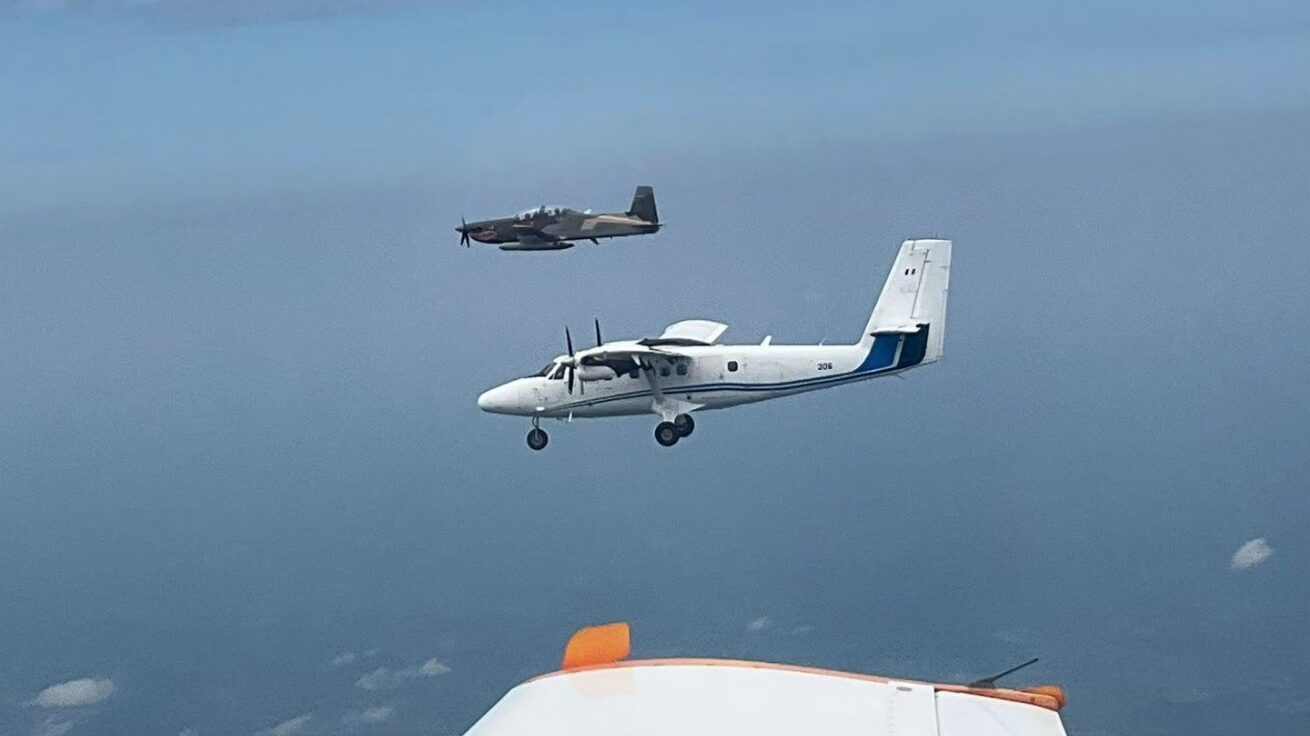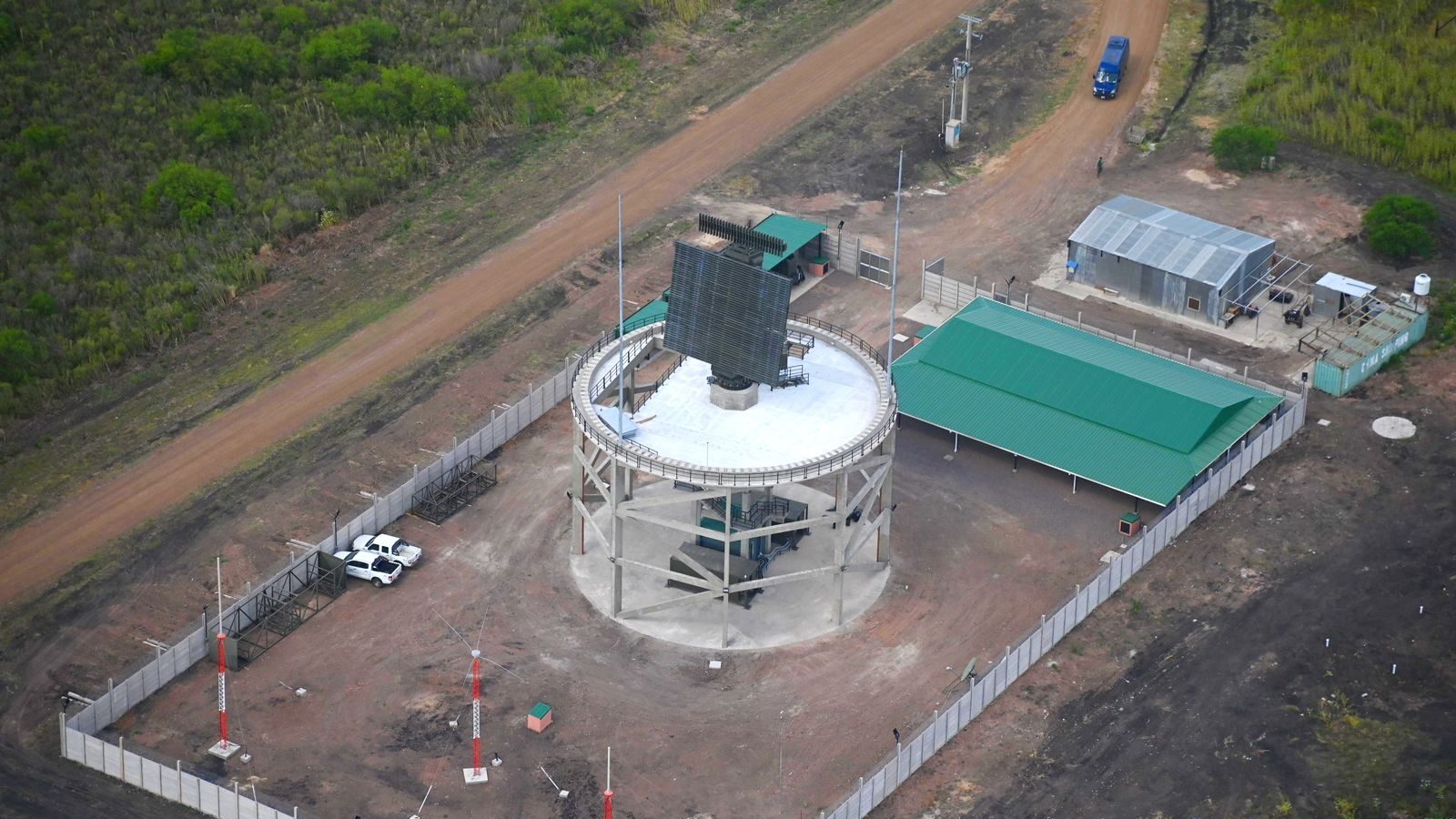
Peruvian air force participated in multinational exercise Amazonas II. (Peruvian Air Force, Twitter Account, 4 August, 2023)
WASHINGTON — About two weeks ago Brazilian authorities sent up two Embraer A-29 Super Tucano light attack aircraft to intercept a Beechcraft Baron 50 that had flown into Brazilian airspace from Paraguay and was suspected of ferrying drugs.
The planes, assisted by an early warning and control aircraft, fired warning shots at the private plane and eventually forced it down. Sure enough, the authorities discovered some 500 kilograms of cocaine inside, according to a 26 July press release by the Brazilian Air Force.
The recent interception served to highlight a pressing counter-narcotics responsibility for South American police and militaries — one that several nations recently aimed to upgrade through joint exercises and the purchase of new radars and equipment.
RELATED: Peruvian Navy sails forward with local shipyard SIMA
Last week, for instance, saw the air forces of Brazil, Colombia and Peru carry out the exercise Amazonas II along the tri-border to improve the transfer of information and interceptions of suspicious aircraft.
Brazilian Air General Franciso Bento Antunes Neto, commander of the air force’s joint aerial operations center (Centro Conjunto de Operações Aéreas), praised the exercise and said it “allows these three forces to carry out a combined exercise and to coordinate the transfer of illicit traffic that is identified in their respective countries so that the other country can intercept the aircraft and take the necessary measures to control [its air] space.”
For that exercise, a Peruvian KAI KT-1P trainer aircraft and a Brazilian Cessna C98 Caravan light aircraft were the simulated suspicious aircraft.
Before that, Peru announced on July 28 it planned to acquire “one aircraft and a radar system” for aerial control. The month before, Ecuador’s minister of defense, Luis Lara Jaramillo, announced that country planned to spend $45 million on its own aerial control systems made by the Spanish tech firm Indra, including a radar that reportedly would take up about half the cost.
Further south, Argentina is in the midst of installing a series of radars manufactured by the Argentine aerospace company INVAP across the country’s northern provinces (e.g., Corrientes, Entre Ríos and Santa Fe, close to Brazil, Paraguay, and Uruguay) to improve its airspace control to detect suspicious aircraft. The INVAP-made Radar Primario Argentino radar system in Entre Ríos was inaugurated on Dec. 15, 2022.

Argentina’s new INVAP RPA radar in Entre rios Province. (Argentine Ministry of Defense, 15 December, 2022)
Finally, the Uruguayan Ministry of Defense inaugurated a radar in Durazno to improve air traffic control in late July. In response to a media question about airspace control to combat narco planes, Defense Minister Javier García explained, “We use military radars and also collaborate with neighboring countries because in the north of the country, [the aircraft] entering and leaving Uruguay require only a matter of seconds.” He added that Montevideo is exploring possibilities “to exchange information with Brazil and with Argentina that will allow us to have [aerial] coverage and control.”
US Southern Command says it also assists South American partners in the counter-narcotics mission, passing along intelligence about suspected transshipments.
“They [partner nations] can’t see everything. But if we can point to where there is activity and where they can make a finish on a law enforcement [operation] for a disruption or interdiction, they absolutely go after it… I think we have the template for that,” US Army General Laura Richardson, SOUTHCOM commander, told the Washington, DC, think tank the Center for Strategic and International Studies (CSIS).
But, she warned, intercepting the shipments is not the silver bullet to countering the drug trade. Rather, going after the the narco gangs’ financing is.
“We can’t interdict our way out of this problem, though. So it’s very important that we go after the money… You’ve got to get after the bigger things. And that’s exactly what we’re doing,” she said.
Taking aim: Army leaders ponder mix of precision munitions vs conventional
Three four-star US Army generals this week weighed in with their opinions about finding the right balance between conventional and high-tech munitions – but the answers aren’t easy.


























